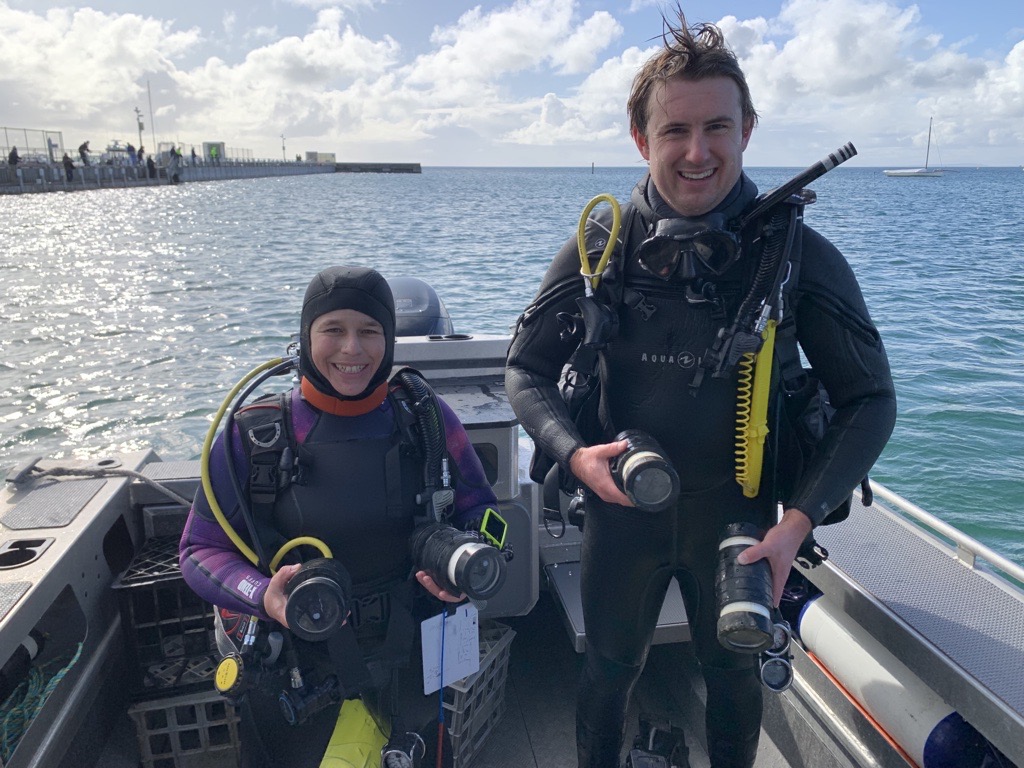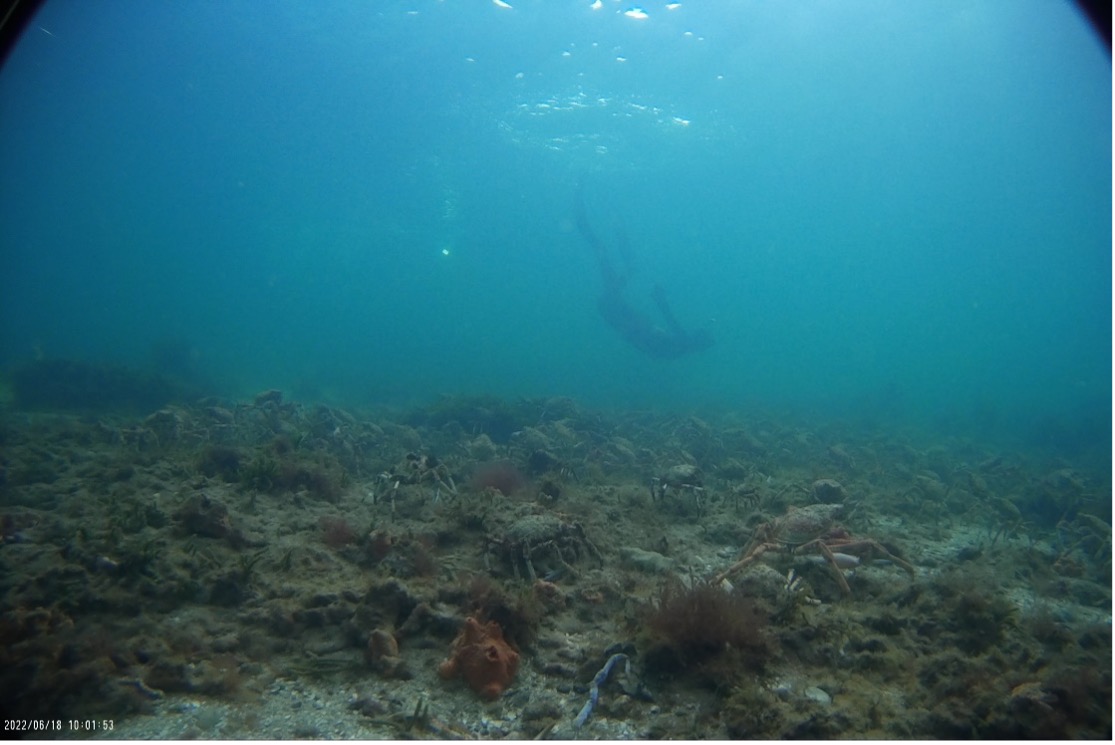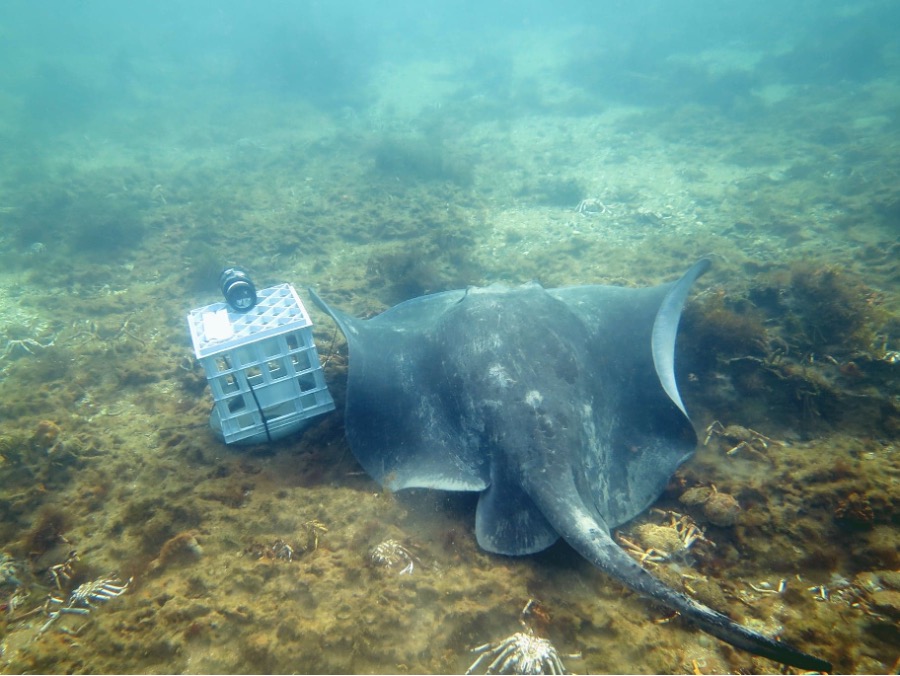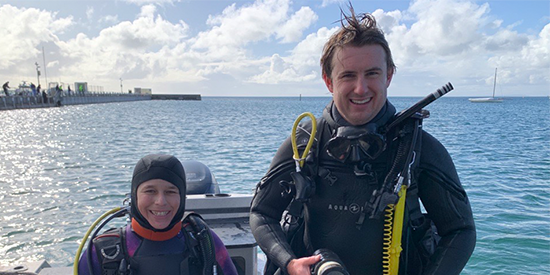'Spider crabs are gathering in their thousands': a day in the life of a PhD graduate
Research news
Do you wonder how sea creatures spend their time underwater? A research degree focusing on marine animals, like giant spider crabs, could be for you. But what does that look like day-to-day?
We asked Dr Elodie Camprasse, a marine ecologist with a passion for all things ‘crabby’, how she’s putting her Deakin University PhD to good use on an average day.
She is a post-doctoral research fellow and coordinates the Spider Crab Watch, a citizen science program to unlock the mystery of giant spider crabs in Port Phillip Bay.
Her project will help us gather information on this amazing natural spectacle and the role it plays in the marine environment.
This year she even attracted David Attenborough’s attention and was personally commended for her spider crab research.
6.30 – 7.30am
My alarm rings and I get out of bed. It’s a cold winter morning and still dark outside but the excitement of going to the field helps to shake off the remaining sleepiness.
The boat crew and I go grab breakfast and coffee, before loading the car with all the gear and food we need for the day.
7.30 – 8am
We drive to the Queenscliff marina, right around the corner from the Queenscliff Marine Centre, to unload the gear into a trolley.
We’ve got pelican cases full of equipment for the day including timelapse cameras to be deployed in the field, GoPro cameras in housings and more.
We also pack dive gear for Associate Professor Dan Ierodiaconou and I who are going to hit the water together. Once everything is loaded onto the boat and Dan and I have donned our wetsuits, we’re all ready to go.

8 – 8.30am
It’s a bit chilly, but it’s a beautiful day to be on the water.
Twenty minutes or so after leaving the marina, we arrive at St Leonards, on the Bellarine Peninsula, where spider crabs are gathering in their thousands in their annual winter get-together.
This is an amazing natural phenomenon, which happens nowhere else in the world.
We take a moment to come up with a plan with PhD candidate Darren Wong and research assistant Scott Gray, whilst Senior Marine Technical Officer Paul Tinkler is grabbing our GPS position and taking care of navigation.
8.30am – 1pm
Dan and I finish assembling the dive gear and jump in.
Despite the long history of spider crab get-togethers in Port Phillip Bay and their fame in the media worldwide, very little is known about spider crabs. This is exciting for us as anything we find out through our research will be brand new!

1.30 – 3.30pm
This afternoon, we are deploying timelapse cameras across the site to capture spider crab activity.
The cameras are attached to weighted milk crates and gently lowered from the boat onto the seafloor, a couple of meters down, where they will stay for a few weeks and take photos at regular intervals.
After retrieving the cameras and the recorded images, we will rely on the help of citizen scientists to scan through them and help identify what they see – spider crabs, other marine life and signs of human activity.

3.30 – 5pm
Dan and I come back on board, disassemble our equipment, and get changed. A quick snack and hot drink help us get warmed again. With the help of the rest of the crew, we store the gear away and get back to the marina, where we arrive a bit before a beautiful sunset to conclude the day.
Interested in a career like Dr Camprasse? Explore research degrees and PhDs at Deakin.
Share this story

Key Fact
Dr Elodie Camprasse, a marine ecologist with a passion for all things ‘crabby’, shares how she’s putting her Deakin University PhD to good use on an average day.
